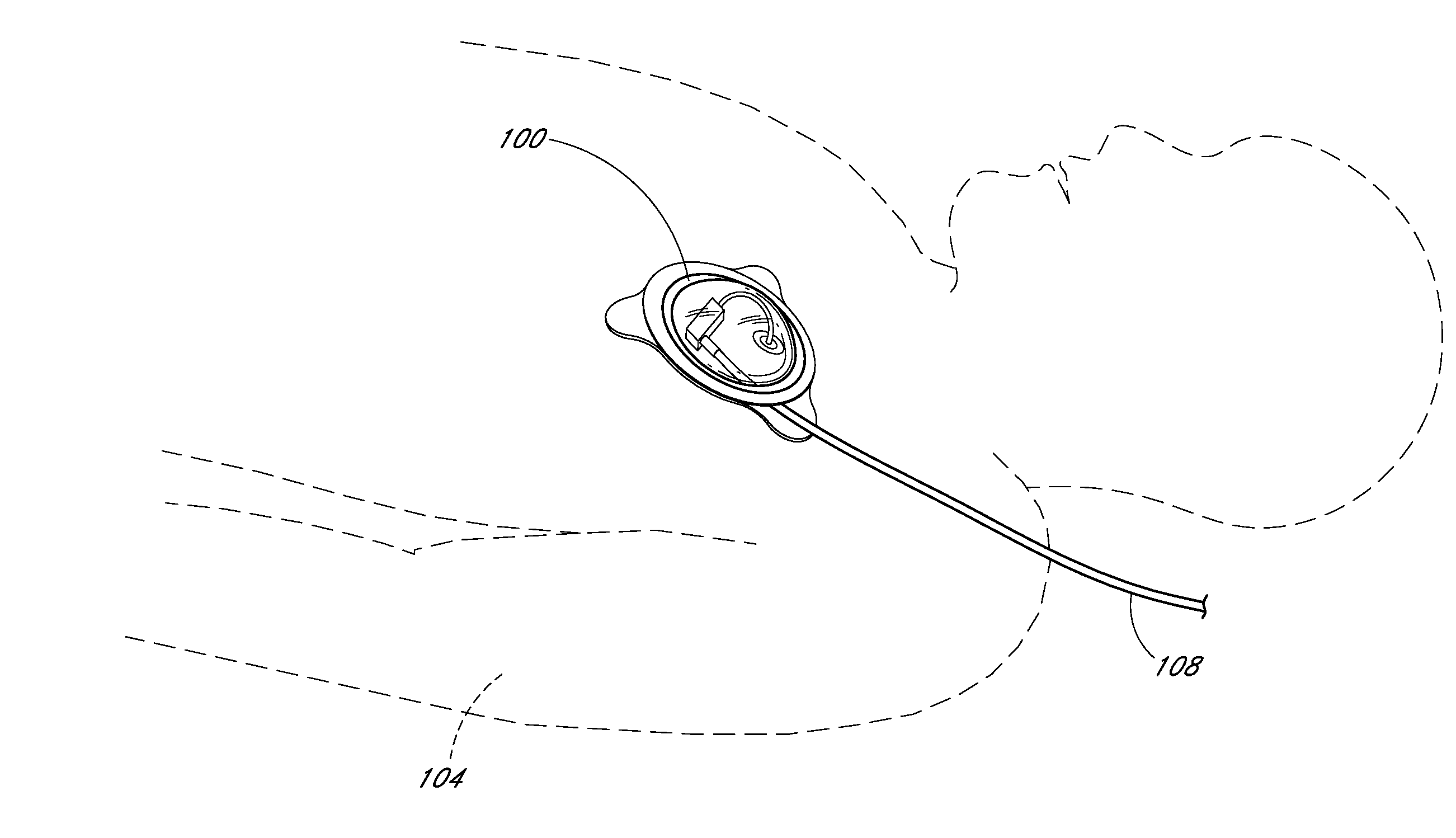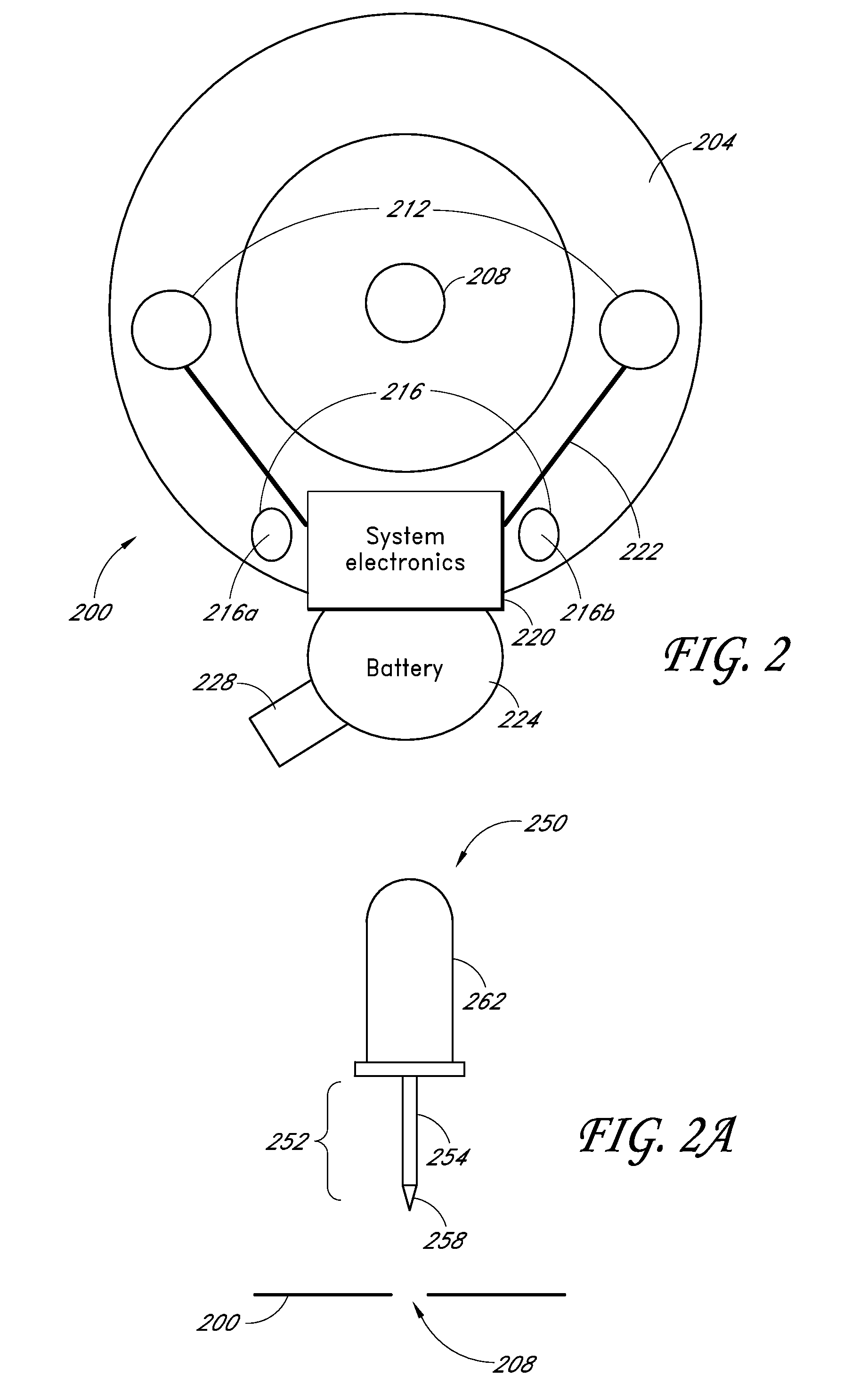Patient status sensor
a patient status and sensor technology, applied in the field of patient status monitoring, can solve the problems of high complexity of problems, difficult or even impossible access to traditional patient sites for intravenous line insertion, and high rate of complications, so as to achieve less likely to fail
- Summary
- Abstract
- Description
- Claims
- Application Information
AI Technical Summary
Benefits of technology
Problems solved by technology
Method used
Image
Examples
example io
Patient Status Sensor Embodiments
[0039]In view of the aforementioned, embodiments of a patient status sensor are provided that can be applied to a patient or trauma victim to provide a quick visual indication of the patient's vital signs (e.g., respiration, heart rate, or other vital signs). Certain embodiments can be configured as an adhesive patch that includes electrodes for measuring heart rate (and respiration in some implementations), a processor configured to perform calculations for determining one or more vital signs using information from the electrodes, and audible or visual indicators to communicate information about vital signs or patient status to a medical attendant. Certain embodiments can include an access opening to allow for intraosseous delivery of fluids to bone marrow (e.g., through sternal or long bone). Certain such embodiments may be used with an IO delivery system configured to provide fluid to bone marrow. Certain embodiments include wired or wireless comp...
PUM
 Login to View More
Login to View More Abstract
Description
Claims
Application Information
 Login to View More
Login to View More - R&D
- Intellectual Property
- Life Sciences
- Materials
- Tech Scout
- Unparalleled Data Quality
- Higher Quality Content
- 60% Fewer Hallucinations
Browse by: Latest US Patents, China's latest patents, Technical Efficacy Thesaurus, Application Domain, Technology Topic, Popular Technical Reports.
© 2025 PatSnap. All rights reserved.Legal|Privacy policy|Modern Slavery Act Transparency Statement|Sitemap|About US| Contact US: help@patsnap.com



